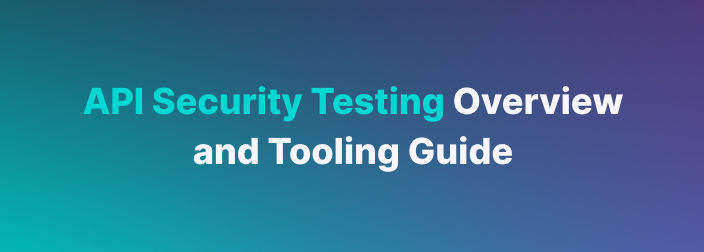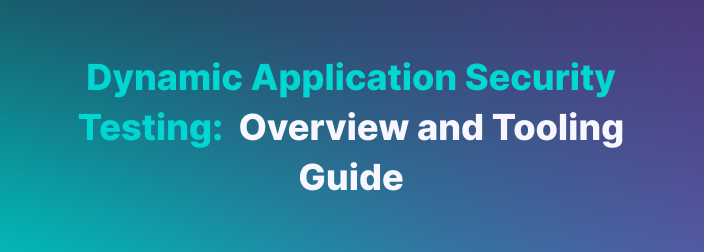With every passing year, the complexity of cyber threats intensifies. With each new threat comes the demand for more sophisticated defenses. This guide is designed to teach you the essential cybersecurity tools that stand as the vanguard against these evolving threats. From network security monitors and web vulnerability scanning to encryption tools, this blog uncovers the critical technologies that cyber security professionals depend on to safeguard our digital realm. You'll learn about the tools and how to strategically select and effectively implement them to enhance your digital defenses.
This year, we saw a significant increase in the demand for cybersecurity tools. With cybercrime costs predicted to soar to $10.5 trillion annually by 2025, the urgency for robust digital protection is crucial. From network security monitoring tools, the critical role of encryption in data protection, web vulnerability scanners and rigorous testing afforded by penetration testing tools, this blog will dive into a handful of solution categories that are necessary for combating cyber threats.
Choosing the right cyber security tool is likened to selecting the most effective armor in battle. It requires a holistic understanding of your organization's unique landscape—considering everything from prevalent industry threats to regulatory compliance. This blog guides you through the selection process, emphasizing the importance of features such as automation, ease of use, and adaptability to new threats. Let's begin by looking at precisely what cybersecurity tools are.
What Are Cyber Security Tools?
A security tool, whether software or hardware, is engineered to detect, thwart, and respond to potential cyber threats and vulnerabilities threatening our digital ecosystems. As the bedrock of cybersecurity, these tools offer the initial barricade against a spectrum of attacks poised to undermine the integrity, confidentiality, and availability of data and systems.
The essence of a security tool lies in its mission to safeguard information and the infrastructures that harbor, process, and communicate this data. Security tools span a diverse array, from the defensive perimeters established by firewalls to surveillance conducted by antivirus programs and intrusion detection systems (IDS). Beyond these, encryption solutions dedicate themselves to protecting data privacy, while security information and event management (SIEM) systems orchestrate real-time security insight and response across the digital landscape.
Moreover, the realm of security tools extends to encompass a variety of operational capabilities essential for comprehensive digital protection. This includes, but is not limited to, vulnerability assessment, which identifies and quantifies security loopholes; patch management, ensuring timely updates to software and systems; endpoint security, guarding every device, including mobile devices, that connects to the network; and access control, which verifies and permits entry to authorized users while barring unauthorized ones. These functionalities can be encapsulated within standalone applications or integrated into multifaceted suites, offering a synergistic approach to cybersecurity.
It's pivotal to recognize their strategic importance in framing our discussion of the myriad types of cybersecurity tools that follow. They are technical solutions and critical components of a holistic security posture designed to protect against the ever-evolving cyber threat landscape. As we explore these tools further, remember that each is a piece of a larger puzzle, working in concert to secure the digital domains upon which modern society increasingly relies.
Types of Cybersecurity Tools

In the intricate and expansive domain of cybersecurity, tools designed to protect our digital environments act as the frontline defense against a spectrum of cyber threats and security flaws. These tools, wielded by dedicated cybersecurity professionals, are pivotal in monitoring network security, encrypting confidential data, identifying vulnerabilities, and simulating cyber-attacks. They are the digital age's superheroes, safeguarding our virtual worlds with unwavering vigilance.
Network Security Monitoring Tools
Network security monitoring tools are the ever-watchful eyes of an organization's digital perimeter. These tools are indispensable for detecting external threats and network security weaknesses and thwarting potential attacks by meticulously analyzing network activities and aggregating essential metrics on network operations. For instance, intrusion detection and prevention systems such as Snort, excel in monitoring network traffic and performing real-time analysis of network protocols to identify unauthorized activities. Meanwhile, platforms like Nagios and Splunk offer comprehensive real-time and retrospective network analysis capabilities, empowering IT teams with alerts on unauthorized activities and providing detailed event reports. Other notable tools in this category include Argus, Nagios, and OSSEC, renowned for their efficacy in detecting external threats to operating systems.
Encryption Tools
Encryption tools are the custodians of digital confidentiality. They are crucial in securing data by transforming readable text into encrypted formats, rendering it inaccessible to unauthorized entities. Solutions like AxCrypt and NordLocker provide robust encryption services, ensuring the safety of sensitive data. Additionally, Tor offers invaluable protection for user identities and locations. GnuPG stands out for its data and communication encryption versatility, offering comprehensive key management functionalities and compatibility across various platforms.
Web Vulnerability Scanners
Web vulnerability scanners act as the cybersecurity landscape's detectives, working to identify security vulnerabilities within web applications to preempt potential exploits. Renowned tools in this domain include Nikto, Nmap, and OWASP’s Zed Attack Proxy (ZAP), each offering unique capabilities in detecting security and network vulnerabilities through meticulous web vulnerability scans.
For more advanced capabilities, StackHawk distinguishes itself with its user-friendly interface, rapid scanning capabilities, and extensive API testing suite, making it an indispensable tool for continuous security monitoring. As a leading solution in Dynamic API and Application Security Testing (DAST), StackHawk empowers developers and security teams to identify and rectify security vulnerabilities in web applications efficiently beyond the capabilities of traditional DAST tools. By adding StackHawk's testing capabilities directly into a CI/CD pipeline, developers can ensure their code is tested upon each pull request. This helps to ensure your team's digital assets remain secure against potential threats as they are being built before any vulnerabilities can hit production.
Penetration Testing Tools
Penetration testing tools are invaluable for evaluating the resilience of cybersecurity defenses. These tools simulate cyber-attacks to identify exploitable vulnerabilities (such as those seen in brute force attacks or cross-site scripting), enabling organizations to fortify their defenses proactively. Metasploit, recognized as a premier penetration testing platform, provides a comprehensive suite of functionalities, including vulnerability scanning and payload execution. Similarly, NMAP is celebrated for its extensive network discovery and security auditing capabilities, which are critical in practical penetration testing efforts.
Of course, the list above does not include every type of security tool since new types of tools are constantly being introduced. That being said, by adopting some of the tools mentioned above, most organizations will be well on their way to creating a production-ready and robust security stack. Want to know more about specific tools to add? Let's check out the top cybersecurity tools for 2024 next!
Essential Cybersecurity Tools for 2024

Are you ready to upgrade your digital defenses? This section dives into cyber security software and tools, revealing the specific solutions you can deploy for network monitoring, encryption, vulnerability scanning, and more. Let's look at some of the top tools to consider for 2024!
Network Security Monitoring
Snort
An open-source intrusion detection and prevention system (IDPS) was created by Cisco and is now supported by a robust community.
Highlights:
Real-time traffic analysis and intrusion detection
Flexible rule-based language for customizing detection
Large community support and extensive documentation
Who should use it? Network administrators and security teams responsible for safeguarding network infrastructure.
Splunk
A powerful platform for log aggregation, analysis, and visualization, offering real-time network security insights.
Highlights:
Collection of log and machine data from diverse sources
Advanced search and correlation capabilities
Customizable dashboards and reporting
Who should use it? IT teams and security operations centers (SOCs) needing comprehensive visibility into network activity.
Encryption
VeraCrypt
A free and open-source encryption tool, considered a successor to TrueCrypt, offering advanced security features.
Highlights:
On-the-fly encryption for files, partitions, and entire drives
Plausible deniability and hidden volumes for enhanced security
Cross-platform compatibility
Who should use it? Individuals and businesses seeking robust data encryption for sensitive information.
NordLocker
A cloud-based encryption solution from the makers of NordVPN, providing user-friendly secure file storage and sharing.
Highlights:
Zero-knowledge encryption (only you have the keys)
Easy drag-and-drop file encryption
Secure collaboration features
Who should use it? Individuals and teams needing cloud-based encryption with a focus on usability and collaboration.
Web Vulnerability Scanning
StackHawk
A developer-focused DAST (Dynamic Application Security Testing) platform designed for modern development pipelines.
Highlights:
Seamless integration into CI/CD pipelines
Fast and accurate vulnerability scans
Prioritization and actionable remediation guidance
Who should use it? AppSec and development teams looking to integrate security testing directly into their build processes.
Snyk
A developer-centric security platform encompassing both SAST (Static Application Security Testing) and open-source dependency scanning.
Highlights:
Code analysis during development for early vulnerability detection
Identification of vulnerabilities in open-source libraries
Integration into IDEs and CI/CD pipelines for seamless testing
Who should use it? Developers and DevSecOps teams seeking to prioritize security within their software development processes.
Penetration Testing
Metasploit Framework
Metasploit is an open-source penetration testing platform with a vast library of exploits and payloads.
Highlights:
Modular architecture for customizing attacks
Development and execution of custom exploits
Large community and extensive resources
Who should use it? Experienced penetration testers and ethical hackers
Choosing the Right Cybersecurity Tool for Your Needs
With so many available tools, selecting the right ones can be challenging. A strategic approach is crucial, considering unique risks, industry-specific threats, compliance requirements, and your organization's goals. Let's explore the essential factors guiding your decision when adopting new security tools.
Know Your Enemy: Conduct a Risk Assessment
Begin by identifying your most valuable assets and the specific vulnerabilities they may face. Consider prevalent threats within your industry and understand the regulatory landscape you must navigate (e.g., HIPAA for healthcare, PCI-DSS for payment processing).
Match the Tool to the Task: Evaluate Features & Functionality
Does the tool address the specific risks you've identified? Consider its core features, the level of automation it offers, and whether it seamlessly integrates with your existing technology stack.
Usability is Key: Assess Ease of Use and Adoption
A tool with a steep learning curve can lead to underutilization or misconfiguration. Prioritize intuitive tools your team can quickly adopt and maintain, minimizing friction and maximizing security gains.
Investigate the Source: Vendor Reputation
Choose vendors with a proven track record in security, responsive support, and a commitment to continuous improvement. Their reputation is an indicator of the tool's reliability and trustworthiness.
Think Ahead: Adaptability to Evolving Threats
The cybersecurity landscape is changing rapidly. Does the tool have a robust roadmap for updates and the ability to adapt to emerging threats? Choosing future-proof solutions ensures your investment continues to protect you over time.
The Bottom Line: Cost and ROI
Factor in the total cost of ownership, including licensing, support, deployment, and training. Analyze the potential gains regarding risk reduction, regulatory compliance, and the impact on your security posture.
Considering these factors, organizations can guarantee that they have a good start on building a robust security stack that keeps up with the demands of modern applications. The most significant point is to remember that security is very custom and personal and depends on the organization and the application's needs.
Staying Ahead of Security Threats with StackHawk
When looking for the best cybersecurity tools to empower developers, StackHawk is there to help teams take a proactive stance on API and application security by "shifting left". StackHawk’s DAST solution is not just about detecting vulnerabilities; it's an engine for continuous security improvement. With its developer-first approach, StackHawk places the power of security in the hands of those who know the intricacies of the code—those who build it.
StackHawk’s platform is engineered to integrate seamlessly into your development workflow, making security testing a natural part of the process rather than an afterthought. It automates the discovery of security bugs, allowing developers to find and fix issues as they occur in real-time. This streamlines the path to production, ensuring security keeps pace with rapid deployment cycles by allowing users to embed StackHawk's capabilities into their CI/CD flows. As a result, it bolsters security and aligns with agile methodologies and DevOps practices.
Being easy to configure and deploy, StackHawk ensures that getting started with security testing is a hassle-free experience. Its user-friendly interface and detailed documentation mean that even teams new to DAST can begin fortifying their applications with minimal onboarding time. By choosing StackHawk, you're not just choosing a security tool—you're adopting a security partner that scales with your needs, simplifies compliance, and offers clear insights with actionable data to secure your applications against the latest threats.

Summary
As we wrap up this comprehensive journey through the essential cybersecurity tools for 2024, it's clear that the stakes in digital security have never been higher. In an era where cyber threats escalate, and technological advancements surge rapidly, the cybersecurity tools we've examined are indispensable elements of your digital defense arsenal. Organizations can address vulnerabilities head-on by understanding and implementing SAST, DAST, IAST, and other pivotal security solutions, ensuring resilience against current and future cyber threats.
The cybersecurity landscape is a battleground where only the best-armed survive and thrive. Tools like StackHawk's DAST platform offer a glimpse into the future of cybersecurity, where automation, integration, and developer-centric solutions lead the charge in securing our digital frontiers. StackHawk's ease of use and deep integration into the CI/CD pipeline enables teams to seamlessly incorporate security into their development process, making it an indispensable ally for vulnerability detection and response.
Don't let the complexity of cybersecurity deter you. Embrace it with StackHawk and turn it into your competitive edge. Take the step today to experience the power of proactive security by trying out StackHawk. Start your free trial and equip your team with the capabilities to detect, analyze, and remediate security vulnerabilities with confidence and precision.



